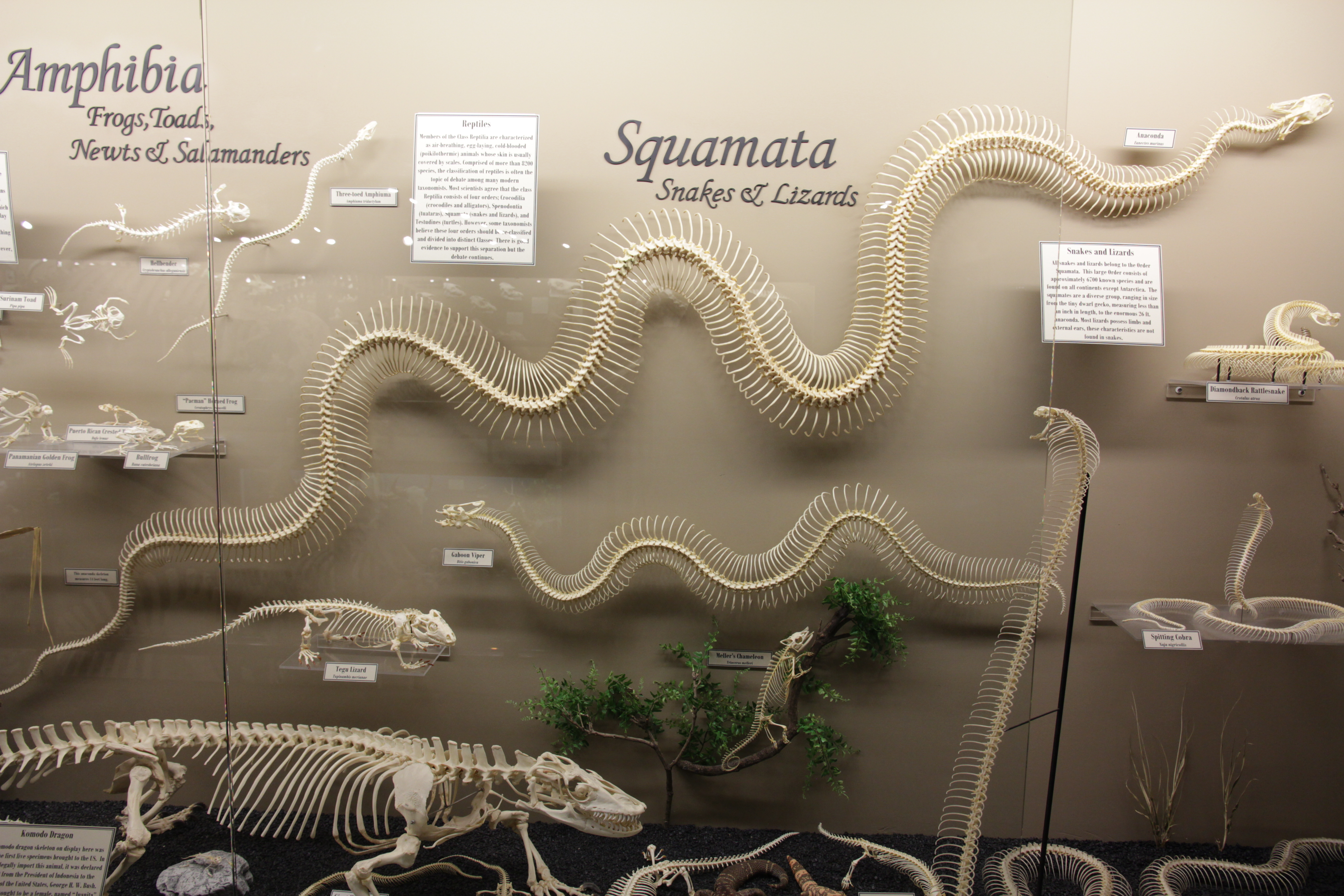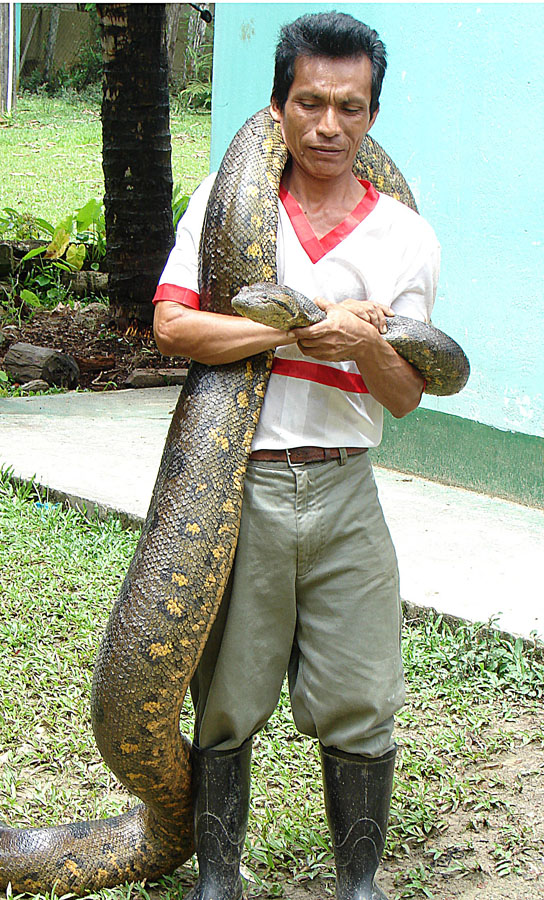Anaconda2 on:
[Wikipedia]
[Google]
[Amazon]
Anacondas or water boas are a group of large


 * Any member of the genus ''
* Any member of the genus ''
snake
Snakes are elongated, limbless, carnivorous reptiles of the suborder Serpentes . Like all other squamates, snakes are ectothermic, amniote vertebrates covered in overlapping scales. Many species of snakes have skulls with several more j ...
s of the genus
Genus ( plural genera ) is a taxonomic rank used in the biological classification of living and fossil organisms as well as viruses. In the hierarchy of biological classification, genus comes above species and below family. In binomial nom ...
''Eunectes
''Eunectes'' is a genus of boas found in tropical South America commonly called anacondas. They are a semiaquatic group of snakes and include one of the largest snakes in the world, '' E. murinus'', the green anaconda. Four species are currentl ...
''. They are found in tropical South America
South America is a continent entirely in the Western Hemisphere and mostly in the Southern Hemisphere, with a relatively small portion in the Northern Hemisphere at the northern tip of the continent. It can also be described as the sout ...
. Four species
In biology, a species is the basic unit of classification and a taxonomic rank of an organism, as well as a unit of biodiversity. A species is often defined as the largest group of organisms in which any two individuals of the appropriate s ...
are currently recognized.
Description
Although the name applies to a group of snakes, it is often used to refer only to one species, in particular, the common orgreen anaconda
The green anaconda (''Eunectes murinus''), also known as the giant Emerald anaconda, common anaconda, common water boa or sucuri, is a boa species found in South America. It is the heaviest and one of the longest known extant snake species. Lik ...
(''Eunectes murinus''), which is the largest snake in the world by weight, and the second longest after the reticulated python
The reticulated python (''Malayopython reticulatus'') is a python species native to South and Southeast Asia. It is the world's longest snake, and is among the three heaviest. It is listed as least concern on the IUCN Red List because of its w ...
.
Etymology
The South American names ''anacauchoa'' and ''anacaona'' were suggested in an account by Peter Martyr d'Anghiera, but the idea of a South American origin was questioned byHenry Walter Bates
Henry Walter Bates (8 February 1825, in Leicester – 16 February 1892, in London) was an English naturalist and explorer who gave the first scientific account of mimicry in animals. He was most famous for his expedition to the rainforests of ...
who, in his travels in South America, failed to find any similar name in use. The word anaconda is derived from the name of a snake from Ceylon ( Sri Lanka) that John Ray described in Latin in his ' (1693) as '. Ray used a catalogue of snakes from the Leyden museum supplied by Dr. Tancred Robinson, but the description of its habit was based on Andreas Cleyer
Andreas Cleyer (27 June 1634 – between 20 December 1697 and 26 March 1698) was a German physician, pharmacist, botanist, trader and Japanologist.
Biography
Andreas Cleyer could be called a "soldier of fortune." He began as a modest soldier, ...
who in 1684 described a gigantic snake that crushed large animals by coiling around their bodies and crushing their bones. Henry Yule
Sir Henry Yule (1 May 1820 – 30 December 1889) was a Scottish Orientalist and geographer. He published many travel books, including translations of the work of Marco Polo and ''Mirabilia'' by the 14th-century Dominican Friar Jordanus. ...
in his ''Hobson-Jobson
''Hobson-Jobson: A Glossary of Colloquial Anglo-Indian Words and Phrases, and of Kindred Terms, Etymological, Historical, Geographical and Discursive'' is a historical dictionary of Anglo-Indian words and terms from Indian languages which came in ...
'' notes that the word became more popular due to a piece of fiction published in 1768 in the Scots Magazine by a certain R. Edwin. Edwin that described a 'tiger
The tiger (''Panthera tigris'') is the largest living cat species and a member of the genus ''Panthera''. It is most recognisable for its dark vertical stripes on orange fur with a white underside. An apex predator, it primarily preys on ...
' being crushed to death by an anaconda, when there actually never were any tigers in Sri Lanka.), and it is the former that occurs in Sri Lanka. Yule and Frank Wall noted that the snake was in fact a python and suggested a Tamil
Tamil may refer to:
* Tamils, an ethnic group native to India and some other parts of Asia
**Sri Lankan Tamils, Tamil people native to Sri Lanka also called ilankai tamils
**Tamil Malaysians, Tamil people native to Malaysia
* Tamil language, nativ ...
origin ' meaning elephant killer. A Sinhalese
Sinhala may refer to:
* Something of or related to the Sinhalese people of Sri Lanka
* Sinhalese people
* Sinhala language, one of the three official languages used in Sri Lanka
* Sinhala script, a writing system for the Sinhala language
** Sinha ...
origin was also suggested by Donald Ferguson who pointed out that the word ' (' lightning/large and ' stem/trunk) was used in Sri Lanka for the small whip snake (''Ahaetulla pulverulenta
Brown-speckled whipsnake or brown vine snake (''Ahaetulla pulverulenta'') is a species of tree snake endemic to Sri Lanka. Populations in the Western Ghats of India are now considered a separate species, ''Ahaetulla sahyadrensis''. It is know ...
'') and somehow got misapplied to the python before myths were created.
The name commonly used for the anaconda in Brazil is ''sucuri'', ''sucuriju'' or ''sucuriuba''.

Species and other uses of the term "anaconda"
The term "anaconda" has been used to refer to: * Any member of the genus ''
* Any member of the genus ''Eunectes
''Eunectes'' is a genus of boas found in tropical South America commonly called anacondas. They are a semiaquatic group of snakes and include one of the largest snakes in the world, '' E. murinus'', the green anaconda. Four species are currentl ...
'', a group of large, aquatic snakes found in South America:
** ''Eunectes murinus
The green anaconda (''Eunectes murinus''), also known as the giant Emerald anaconda, common anaconda, common water boa or sucuri, is a boa species found in South America. It is the heaviest and one of the longest known extant snake species. Li ...
'', the green anaconda – the largest species, found east of the Andes in Colombia, Venezuela, the Guianas, Ecuador, Peru, Bolivia, Brazil and Trinidad and Tobago
Trinidad and Tobago (, ), officially the Republic of Trinidad and Tobago, is the southernmost island country in the Caribbean. Consisting of the main islands Trinidad and Tobago, and numerous much smaller islands, it is situated south of ...
** ''Eunectes notaeus
The yellow anaconda (''Eunectes notaeus''), also known as the Paraguayan anaconda, is a boa species endemic to southern South America. It is one of the largest snakes in the world but smaller than its close relative, the green anaconda. No s ...
'', the yellow anaconda – a small species, found in eastern Bolivia, southern Brazil, Paraguay, and northeastern Argentina
** ''Eunectes deschauenseei
''Eunectes deschauenseei'', commonly known as the dark-spotted anaconda or De Schauensee's anaconda, is a species of snake in the subfamily Boinae of the family Boidae. The species is native to northeastern South America. Like all boas, it is a ...
'', the darkly-spotted anaconda – a rare species, found in northeastern Brazil and coastal French Guiana
** ''Eunectes beniensis
''Eunectes beniensis'' is a boa species known only from the northeastern parts of Bolivia. Its common names, the Bolivian anaconda and the Beni anaconda, are derived from the geographic location of its native habitat: the Beni area of Bolivia. L ...
'', the Bolivian anaconda – the most recently defined species, found in the Departments of Beni
is a Japanese R&B singer, who debuted in 2004 under the Avex Trax label. In 2008, Arashiro left Avex Trax and transferred to Universal Music Japan where she started to perform as simply Beni (stylized as BENI).
She was initially best known fo ...
and Pando in Bolivia
** The term was previously applied imprecisely, indicating any large snake that constricts its prey, though this usage is now archaic.
** "Anaconda" is also used as a metaphor for an action aimed at constricting and suffocating an opponent – for example, the Anaconda Plan
The Anaconda Plan is the name applied to a strategy outlined by the Union Army for suppressing the Confederacy at the beginning of the American Civil War. Proposed by Union General-in-Chief Winfield Scott, the plan emphasized a Union blockade ...
proposed at the beginning of the American Civil War
The American Civil War (April 12, 1861 – May 26, 1865; also known by other names) was a civil war in the United States. It was fought between the Union ("the North") and the Confederacy ("the South"), the latter formed by states ...
, in which the Union Army was to effectively "suffocate" the Confederacy. Another example is the anaconda choke
Arm triangle choke, side choke, or head and arm choke are generic terms describing blood chokeholds in which the opponent is strangled in between their own shoulder and the practitioner's arm. This is as opposed to the regular triangle choke, whi ...
in the martial art Brazilian jiu-jitsu, which is performed by wrapping your arms under the opponent's neck and through the armpit, and grasping the biceps of the opposing arm, when caught in this move, you will lose consciousness if you do not tap out.
See also
*South American jaguar
The South American jaguar is a jaguar (''Panthera onca'') population in South America. Though a number of subspecies of jaguar have been proposed for South America, morphological and genetic research did not reveal any evidence for subspecific ...
, a competitor or predator
Notes
References
{{Set index article, snakes Eunectes Snake common names